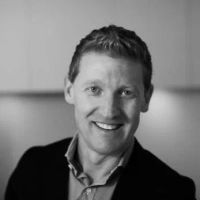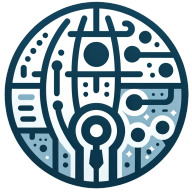8 Tips for Building a Comprehensive Employee Development Program
Unlock the full potential of employee development programs with this comprehensive guide, rich with insights from seasoned industry experts. Discover actionable strategies to align employee aspirations with organizational objectives, ensuring a seamless fusion of growth and success. Dive into expert-driven methodologies that guarantee a tailored, holistic approach to fostering talent within your company.
- Create A Clear Skills Matrix
- Align Program With Company And Employee Goals
- Start With A Needs Assessment
- Conduct Focus Groups Before Program Decisions
- Assess Employee Needs And Tailor Program
- Align Training With Required Skills For Success
- Take A Tailored Holistic Approach
- Secure Leadership Buy-In Through Active Participation
Create A Clear Skills Matrix
Start by creating a clear skills matrix that maps both current capabilities and future needs across your organization. I've discovered that the most successful development programs begin with a thorough understanding of where your people are now and where they need to be to drive business growth. This foundation allows you to build targeted learning paths that align individual growth with business objectives, making the program both meaningful for employees, and valuable for the company.

Align Program With Company And Employee Goals
The single most important piece of advice I'd give to a company starting an employee development program is to ensure it aligns with both the company's goals and the employees' personal aspirations. A program that only serves the business will feel like a box ticking exercise, and one that solely focuses on the employee's growth without tying it back to the company's vision won't provide a return on investment. I've always found that successful programs are those that balance structured learning, such as workshops, mentorship, or certifications with practical, on-the-job projects that challenge employees and allow them to apply what they've learned in real time. For example, in one of my coaching sessions with a logistics company in the UAE, we implemented a program where junior staff received training in operational leadership and were immediately tasked with leading small, high-impact projects. This not only sped up their development but also significantly improved efficiency across departments. Within nine months, they experienced a 22% boost in productivity, and morale skyrocketed because the employees felt genuinely invested in.
This approach works because it taps into human psychology—people are more engaged when they see personal growth and understand how their work contributes to a bigger picture. My experience building and leading teams in telecommunications taught me the importance of development programs that are measurable and action-driven. When I scaled my first company to 30 employees, we implemented a similar system where employees could identify the skills they wanted to develop, and we paired that with training modules and real-world projects. This not only reduced turnover over two years but also helped us generate millions in revenue because our people were more equipped, motivated, and innovative. The key takeaway is that a great development program isn't an expense, it's an investment that, when done correctly, pays dividends for both the business and its employees.
Start With A Needs Assessment
If you're building an employee development program from the ground up, my best advice is to start with a needs assessment. Talk to employees and managers to understand where skill gaps exist, what career goals people have, and which areas of training or resources would make the biggest difference. This way, you can create a program that supports individual growth while also aligning with the company's objectives.
For instance, you could use surveys, one-on-one conversations, or performance data to figure out the key focus areas. Maybe it's leadership development, sharpening technical skills, or encouraging better collaboration across teams. Once you've got that clarity, you can design a program that blends different learning methods-like workshops, mentorship opportunities, online courses, and hands-on training.
The key is to involve employees in the process and make sure the program delivers measurable results. When people feel heard and see real progress, you're not just helping them grow-you're also boosting their engagement and loyalty to the company.

Conduct Focus Groups Before Program Decisions
Go slowly before deciding on a program. Set up focus groups to understand the needs of those being trained. By doing this research beforehand, you can ensure the success of the program. Specifically, corporations need to sit down with their employees to ensure there is 'buy-in', before signing up employees for a development program. The company should understand completely the needs of those being trained. How do they feel about attending this training? Is this program something that was requested by employees or by management? Do the employees understand the 'why' behind the program? Do they understand the big picture behind the program and who is asking for it? How will it affect their everyday lives or how will this program affect their future? And lastly, who is totally committed? I see many companies set up 'benefits' for employees that may not have wanted these benefits. So to save money, save time, and ensure a really effective development program, talk with your employees extensively, and clearly, before taking any significant action.

Assess Employee Needs And Tailor Program
My top recommendation for creating a comprehensive employee development program is to start by assessing both the needs and desires of employees, then tailor the program to address them. I suggest organizations first gather this information through surveys, conversations, and other feedback channels. Once the data is collected, the next step is to carefully evaluate the responses and align them with the organization's goals, needs, and resources. This will help ensure the development program is not only relevant and effective but also beneficial for both employees and the organization as a whole.

Align Training With Required Skills For Success
My top piece of advice for building a comprehensive employee development program is to focus on aligning training with the specific skills your employees need to succeed in their roles while also preparing them for growth within the company. Start by identifying the core skills and certifications required for your industry, then create tailored programs that include hands-on training, mentorship opportunities, and clear pathways for advancement. For example, at Ponce Tree Services, I ensure that all team members receive proper safety training, equipment handling expertise, and ongoing education in arboriculture. By doing this, not only do our employees become more confident and skilled, but they also feel valued, which significantly boosts morale and retention.
My own journey as a TRAQ-certified arborist helped me shape this program. I've seen firsthand how access to professional growth opportunities drives both individual and company success. For instance, by investing in consistent training on tree risk assessment, our team now delivers higher quality work, ensures better safety standards, and minimizes costly errors. This targeted development has allowed us to build trust with clients and maintain a reputation for excellence in the DFW area, which has been key to our growth over the past 20 years. The more you invest in your employees, the stronger your company will be.

Take A Tailored Holistic Approach
My top recommendation for building a comprehensive employee development program is to take a tailored, holistic approach that addresses both individual growth and team needs. Start by identifying the specific skills and areas of development required for your organization to thrive. This should involve a combination of one-on-one discussions with employees to understand their personal career aspirations and a broader analysis of company objectives. A successful program goes beyond technical skills and focuses on soft skills, well-being, and fostering a culture of continuous learning. Additionally, it's crucial to incorporate flexibility into the program, ensuring employees can access resources in ways that suit their roles and lifestyles whether through workshops, mentoring, or online training platforms.
At The Alignment Studio, I applied this principle when building our in-house professional development framework for our team of physical therapists and allied health specialists. Drawing on my more than 30 years of experience and my background in both private practice and managing larger clinics, I implemented a system that included regular upskilling workshops, mentoring sessions, and cross discipline learning opportunities. For instance, we collaborated with Pilates instructors and podiatrists on case studies, allowing the team to develop a more integrated approach to patient care. This not only improved their technical skills but fostered collaboration and innovation across disciplines. The results have been outstanding, our team feels empowered, our patient outcomes have improved, and staff retention has remained strong. This holistic, collaborative approach has been key to both our team's success and the growth of our clinic.

Secure Leadership Buy-In Through Active Participation
The single most important factor in building a successful employee development program is securing buy-in from leadership—not just in words, but in action. When leaders actively participate in training and model the behaviors being taught, it sends a powerful message that development is a priority, not just a checkbox. Employees are far more likely to engage when they see their leaders embracing the learning, applying it in their own work, and reinforcing it in daily interactions. A strong program starts at the top—when leadership leads by example, the entire organization follows.



